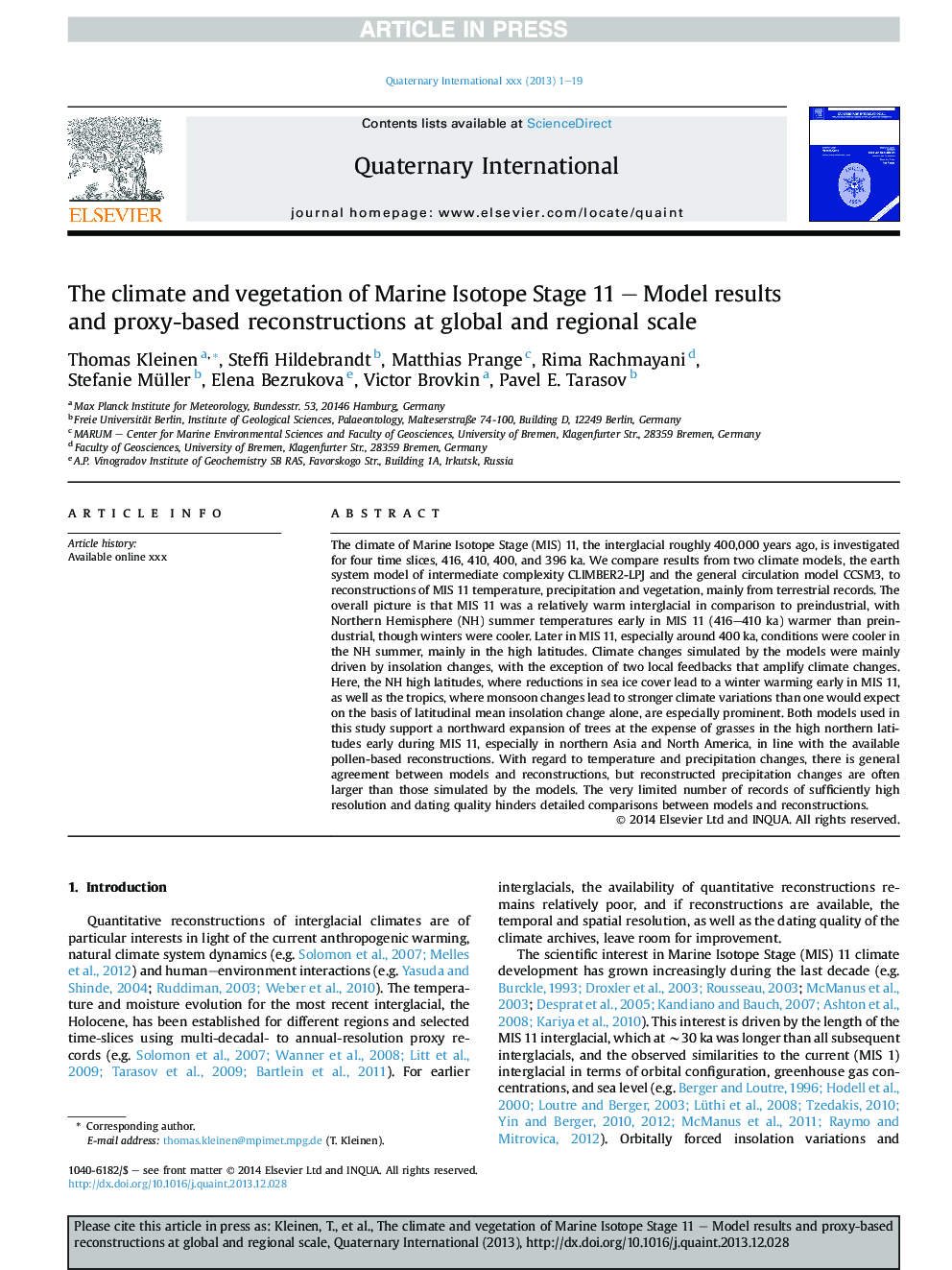| Article ID | Journal | Published Year | Pages | File Type |
|---|---|---|---|---|
| 7452179 | Quaternary International | 2014 | 19 Pages |
Abstract
The climate of Marine Isotope Stage (MIS) 11, the interglacial roughly 400,000 years ago, is investigated for four time slices, 416, 410, 400, and 396Â ka. We compare results from two climate models, the earth system model of intermediate complexity CLIMBER2-LPJ and the general circulation model CCSM3, to reconstructions of MIS 11 temperature, precipitation and vegetation, mainly from terrestrial records. The overall picture is that MIS 11 was a relatively warm interglacial in comparison to preindustrial, with Northern Hemisphere (NH) summer temperatures early in MIS 11 (416-410Â ka) warmer than preindustrial, though winters were cooler. Later in MIS 11, especially around 400Â ka, conditions were cooler in the NH summer, mainly in the high latitudes. Climate changes simulated by the models were mainly driven by insolation changes, with the exception of two local feedbacks that amplify climate changes. Here, the NH high latitudes, where reductions in sea ice cover lead to a winter warming early in MIS 11, as well as the tropics, where monsoon changes lead to stronger climate variations than one would expect on the basis of latitudinal mean insolation change alone, are especially prominent. Both models used in this study support a northward expansion of trees at the expense of grasses in the high northern latitudes early during MIS 11, especially in northern Asia and North America, in line with the available pollen-based reconstructions. With regard to temperature and precipitation changes, there is general agreement between models and reconstructions, but reconstructed precipitation changes are often larger than those simulated by the models. The very limited number of records of sufficiently high resolution and dating quality hinders detailed comparisons between models and reconstructions.
Related Topics
Physical Sciences and Engineering
Earth and Planetary Sciences
Geology
Authors
Thomas Kleinen, Steffi Hildebrandt, Matthias Prange, Rima Rachmayani, Stefanie Müller, Elena Bezrukova, Victor Brovkin, Pavel E. Tarasov,
